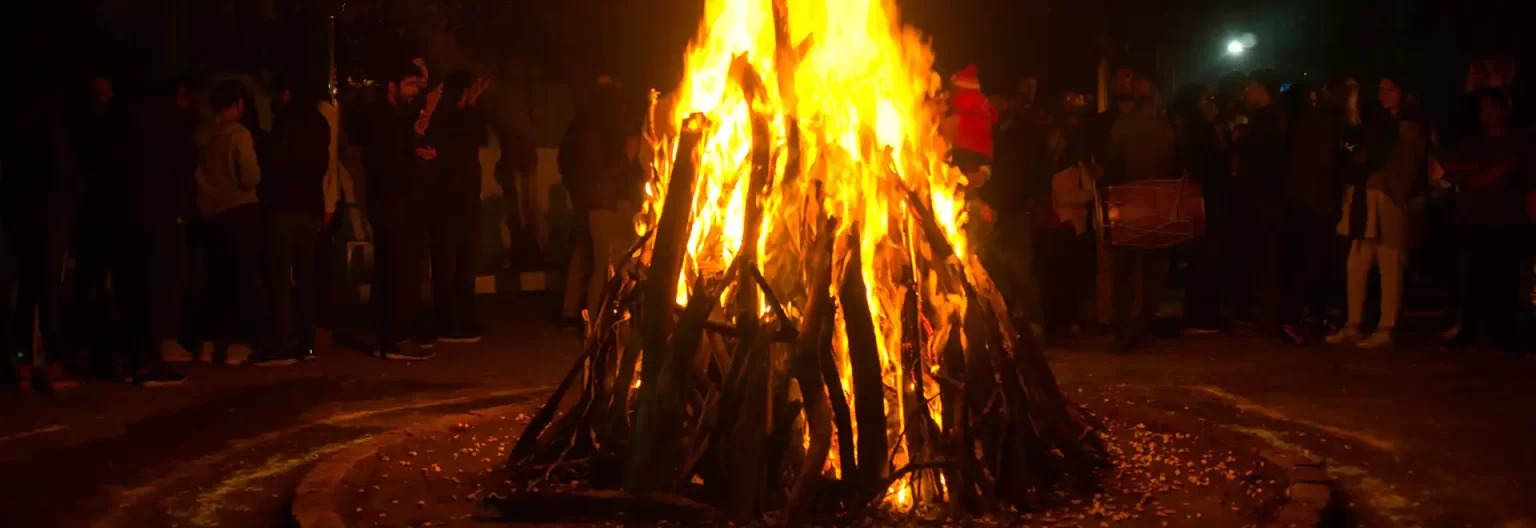Lohri is one of the most popular festivals in Northern India. It holds deep cultural, religious, and agricultural importance because it marks the end of winter and the beginning of the harvest season, thus becoming a time of abundance, hard work, and unity. Primarily celebrated in Punjab, Haryana, Himachal Pradesh, and Delhi, the effervescent festival features bonfires, traditional songs and dances, and above all, coming together of a community as a joyous event. When does Lohri fall on in 2025? Should it be 13th January as traditionally done, or 14th January? This article will clear out the date and further dig deeper into the importance of Lohri, culture, religion, rituals, its significance, and how it is celebrated.
Lohri 2025 Date: When is Lohri Celebrated?
Lohri typically takes place on 13th January of each year. It is actually observed on the last day of the Hindu lunar month called Paush. This festival is always a day before Makar Sankranti. The festival commemorates the moment when the Sun changes into the zodiac sign of Capricorn. As a Hindu festival, it is one that marks an important moment, the moment of the increase in strength of the Sun and thereby the increase in the days which signifies the onset of the harvesting season.
However, the date when Lohri will be held in 2025 is slightly confusing as Makar Sankranti generally falls on the 14th of January in most years. According to the Hindu Panchang or calendar, in 2025, Lohri will be celebrated on the 13th of January following the traditional tradition and Makar Sankranti will be on the 14th. This clarification ensures that the festival remains at the usual time and traditions.
The cultural and religious meaning of Lohri
Lohri is not just a festival, but also a time of celebration with life, hard work, and a changing season. It holds extreme cultural and agricultural importance. This festival marks the end of the cold winters and the warm seasons along with harvesting seasons. This festival is generally an agrarian festival and thus closely associated with farmers who look forward to fruits of their hard labor and approaching harvest.
Lohri is religiously associated with Surya Dev or Sun God and Agni or Fire God. As per the belief in Hindu mythology, it is related to both of these gods, who are sources of energy and power, thus enabling life on earth. Farmers opt for prayer to thank the Sun and Fire for their favor and pray for more prosperity in the forthcoming agricultural cycle. The fire provides an essential focal aspect of the event since people considered it cleansing as well as conferring blessings and good fortune.
Lohri also marks the end of the winter solstice. The day after Lohri is the first day of increasing sunlight, and hence it is a positive sign, symbolizing the growth of new crops and the renewal of life. It is a day for community bonding, family gatherings, and paying homage to the divine forces of nature.
The Mythological Story of Lohri
Lohri is not only a ritual and prayer event but also rich in folklore. Among the most popular and well-known stories about Lohri is that of Dulla Bhatti, a hero from the Mughal era in the Punjab region. Dulla Bhatti is known for rescuing girls who were taken away by force by the Mughal rulers to marry them with dignity.
Dulla Bhatti himself became a source of valor, and the achievements are depicted through some folk songs from the festival itself, which happens to be a Lohri. Often those songs recall their name while sharing the details with courage and emotions. Among so many of those wonderful Lohri songs is:
“Dulla Bhatti wala, Dulla Bhatti wala,
Saddi maran gayi naal pindi da,
Saddi da to sohna cha, sohniye ne,
Dulla Bhatti da, Dulla Bhatti da,
Saddi maran gayi naal pindi da!”
This legend of Dulla Bhatti brings justice, might, and valor into the celebrations of Lohri. The people sing songs in praise of the folk hero, and his legend reminds the people of liberty and social justice.
Suhag, Melas, and Other Rituals and Traditions of Lohri
Lohri is primarily a night festival, and the fire is the center of the celebration. On the last evening of Lohri, people collect in outdoor spaces, within their homes, or even within any village and keep a big blazing fire; the fire is supplied with wood along with cow patties and even agricultural waste from the farm yard. That is to say it symbolically destroys the older things and sets in new hope. The very fire is to purify us, and heat and light by it bring good luck like prosperity, a lot of money, and happiness.
Many people are dancing around the bonfire, singing ancient songs and doing the popular Bhangra and Gidda dances. These energetic and joyful dances make up the festive atmosphere and bring unity and joy to people’s lives. It is the time for people to come together and celebrate fruits resulting from their hard work, mainly farmers for thanking the successful harvest season.
These consist of til, gud, moongphali, and rewri, offered into the bonfire. All these things comprised the tradition at the earlier times since they consisted of warmth, and thus one required it for remaining through the winters. All this was given in the form of thanksgiving towards the harvest, but simultaneously with a purpose to get blessed for the following year.
Lohri and kite flying: A distinct tradition
Another entertaining and exhilarating aspect of Lohri celebrations is kite flying. While this activity is more closely associated with Makar Sankranti, it also plays a significant role during the celebration of Lohri. At the time of Lohri, people—in particular, children and youth—go to the terraces and open fields and fly multicolored kites, making the sky look sky full of kites, which adds festive cheerfulness and jubilation in the air.
Flying kites symbolize the ascension of the Sun; people usually conduct races to see whose kite flies the most or whose string cuts from others. Therefore, it represents a taste of play intermixed with meaning in the Lohri celebrations because kites have come to symbolize the resurgent hope and the newly commenced life much like the period of harvest themselves.
Lohri in 2025: Agriculture and Community Spirit
Lohri 2025 falls on 13th January. The day would set off a fresh cycle of agriculture, community, and culture. A festival has really crossed its religions and become a social event in which people come and join families with communities. He might have the opportunity to bless all the labor that he puts in sweat and sweat when he prays God for blessing all those crops they have prepared. It might be the perfect time for some people to enjoy the warmth generated by crackling fire, spirit of unity, and bounty from nature.
Today, Lohri has assumed the shape of celebrations in the form of parties and get-togethers accompanied by bonfires lit in cities. The rituals are conducted exactly as earlier, but the ambiance does bear some undertones of the modern era too. However, the soul of the festival remained unchanged-the glory of nature, harvest, and collective community spirit.
Conclusion
Conclusion Lohri 2025 would just be another day of celebration on 13th January as it should actually be observed as the day before Makar Sankranti that falls on 14th January. Indeed, more than just a ritual, the festival is meant to be an ode to nature’s cycles, agricultural prosperity, and even social bonding. It ranges from the fables of Dulla Bhatti to the glowing bonfires and happy kite flying. For, after all, it is the time of Lohri when people frolic and enjoy all the sweetness in life and forget about the sheer amount of efforts that go into it. Sitting by the Punjab bonfire or just flying a kite in Delhi-it’s that Lohri spirit that unites all of us as it views the warmth, light, and ambience of an experience.







